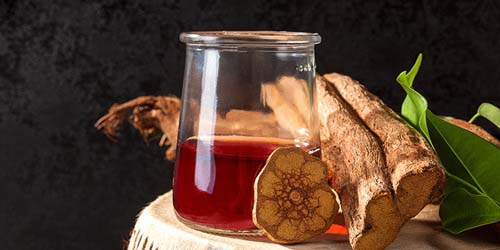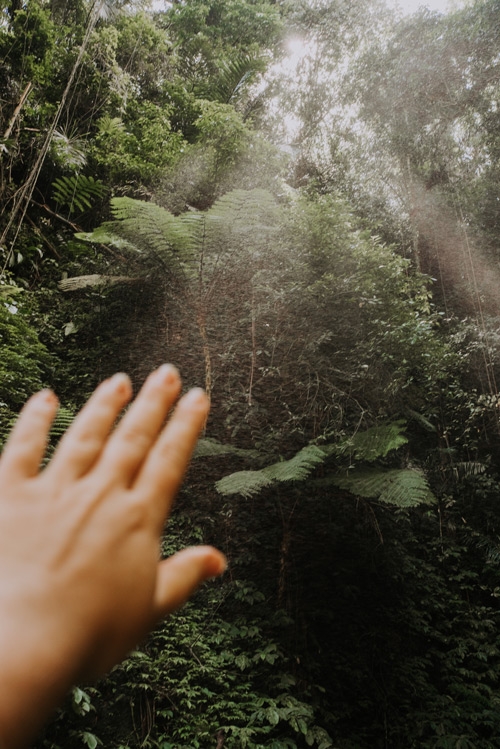
Banisteriopsis caapi is an important ayahuasca plant. It is the most commonly used ingredient to activate DMT from other plants when ingested. But is this Amazonian vine also valuable and useful without the help of DMT? Today we take a look into the magic potion of the shamans.
Making Ayahuasca
Ayahuasca is a real buzzword. It is mentioned in documentaries and series, makes the news and even magazines publish articles about it. Recently, even the fairly conservative mother of the writer of this article asked me if I had ever heard of ayahuasca. We have already written several articles about this mystical drink from South America. What it is exactly, what the dangers are and if micro dosing ayahuasca is useful, can be read in the underlined articles. But what does the psychedelic potion contain?
To make ayahuasca, besides a DMT-rich plant also an MAO-inhibitor goes into the kettle. And almost always in the form of a common vine. Banisteriopsis caapi, (or caapi for short), is the most commonly used ayahuasca plant, while the other ingredients vary. It just depends on which tribe you join to go on a spiritual journey. However, the DMT-rich plant is often called by the same name: Chacruna. In Quechua, a language spoken by local populations, chacruna means something like mix or mishmash. In the Amazon, this word refers to different plants. For example, in Ecuador they do not mean the plant Psychotria viridis, but Diplopterys cabrerana.

What is Banisteriopsis Caapi?
The key question we want answered in this article is whether the ayahuasca vine also has a noticeable effect without being processed into ayahuasca. The short answer is yes - caapi has the following effects:
- Stimulating
- Reduces appetite
- Sharper vision
- Nausea / vomiting
- Possibly mildly hallucinogenic
But as you would expect from us, you will get a longer answer. And if possible, we support it with research.
Banisteriopsis caapi contains three important alkaloids: harmine, tetrahydroharmine and harmaline [1]. These three substances are MAO-inhibitors (blockers) and activate DMT when ingested by mouth. There is also evidence that these substances are antioxidants and have positive effects on our brain and emotions [2, 3, 4, 5].
Besides these substances, the vines also contain banistenoside A, banistenoside B, harmol and the substances epicatechin and procyanidin B2. The dried bark of caapi contains the highest concentration of most of the substances mentioned [2].
What is Banisteriopsis Caapi used for?
The Piaroa, a tribe from southern Venezuela, do not use caapi to prepare ayahuasca, unlike other Amazonian communities [6]. Some Piaroa shamans use a part of the plant 1 to 6 hours before smoking yopo for both healing and ritual purposes. Yopo is another psychedelic plant that is relatively high in bufotenin [7], which offers experiences similar to DMT or magic mushrooms.
The Piaroa shamans say that banisteriopsis caapi by itself increases empathy towards others. It also suppresses hunger and has a stimulating effect. Hunters seem to have sharper eyesight [6].

Banisteriopsis side effects
Researcher Dennis McKenna once said: “Side effects do not exist. They are all effects”. In an interesting study from 2001 [8], 30 people with a certain nasty condition that you can read about in the sources were given a sample of banisteriopsis caapi. All participants in the study benefited from caapi, but all also experienced all sorts of unpleasant effects. All participants in the study also experienced nausea and vomiting. They also experienced involuntary movements and tremors in the body. Some also became dizzy, suffered from diarrhoea and became irritable. One participant became confused and actually experienced hallucinations. In short: banisteriopsis caapi can induce all the effects that users of ayahuasca also report. Except for the complex effects of DMT.

Use Caapi yourself?
It is always a good idea to read up on the scientifically researched effects of plant extracts. Also, if you want to follow the shamans, you can read up on user experiences at Erowid [9]. We hope that after reading this article you have gained an idea of the effects of pure banisteriopsis caapi. For more information on the preparation of banisteriopsis caapi, please read the detailed product description.
Sources:
- [1] Elisabet Domínguez-Clavé et al. Ayahuasca: Pharmacology, neuroscience and therapeutic potential. 11-03-2016. doi: 10.1016/j.brainresbull.2016.03.002
- [2] Yan-Hong Wang et al. Composition, standardization and chemical profiling of Banisteriopsis caapi... 21-04-2010. doi: 10.1016/j.jep.2010.02.013.
- [3] Jose A Morales-García et al. The alkaloids of Banisteriopsis caapi... 13-07-2017. doi: 10.1038/s41598-017-05407-9.
- [4] Volodymyr Samoylenko et al. Banisteriopsis caapi, a unique combination of MAO inhibitory and antioxidative constituents... 03-02-2010. doi: 10.1016/j.jep.2009.10.030.
- [5] M J Schwarz et al. Activities of extract and constituents of Banisteriopsis caapi... 11-03-2016. doi: 10.1016/s0091-3057(03)00129-1.
- [6] Robin Rodd. Reassessing the cultural and psychopharmacological significance of Banisteriopsis caapi... 09-2008. doi: 10.1080/02791072.2008.10400645.
- [7] Jonathan Ott. Pharmacology of Bufotenine. 09-2001.
- [8] Marcos Serrano-Dueñas et al. Effects of Banisteriopsis caapi extract... 06-2001. Scientific Review of Alternative Medicine 5(3):127-132
- [9] Erowid Harmala Vault